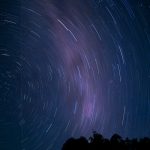What’s Going on In Space: Magnetism Edition
What do a cat’s paw, a whirlpool, and a cigar have to do with each other? We’re glad you asked. Just as cloud-watching will show you figures and outlines of people, animals, and objects, outer space is no exception. In fact, a cat’s paw, a whirlpool, and a cigar are just the latest shapes of nebulas and galaxies that are currently being studied by astronomers for their magnetic fields. Read on to hear more about the latest interesting shapes that are forming in space.
Cat Paw
Last year, we saw how our solar system’s magnetic bubble resembled an interesting food—a deflated croissant to be exact—which you can read all about here. An international team of astronomers have made out another interesting shape — this time, resembling a cat’s paw. Nearby emission nebula and star-forming region, dubbed the Cat’s Paw Nebula, has been studied as part of the B-field In STar-forming Region Observations (BISTRO) survey. Here are the basics about Cat’s Paw Nebula: it’s 4,240 light years away, it’s a high-mass star-forming complex, and very little is known about its magnetic field. The results of this survey have given information about the object’s complex magnetic field structure though. A group of astronomers, led by Doris Arzoumanian of the University of Porto, Portugal, analyzed observations of the dust polarized emission, which was obtained with the SCUBA-2/POL-2 instrument of the James Clerk Maxwell Telescope (JCMT). “The results point out to a variation of the energy balance along the crests of these sub-filaments, from magnetically critical/supercritical at their far ends to magnetically subcritical near the ridge and hubs.”
You can read all about it here on phys.org.
Cigar Magnetic ‘Highway’
NASA is on the hunt to find out what’s fueling the massive ejection of gas and dust out of the Cigar galaxy, aka Messier 82. The name Cigar galaxy comes from Stellar winds streaming from hot new stars form a galactic super wind that is blasting out plumes of hot gas (red) and a huge halo of smoky dust (yellow/orange) perpendicular to the narrow galaxy (white). Jordan Guerra Aguilera, a postdoctoral researcher at Villanova University in Pennsylvania and co-author on the upcoming paper talked about here, shares how the magnetic fields seem to be acting like a highway — meaning there are “lanes” of galactic material making it possible for the material to spread far and wide.
A “super wind,” driven by thousands of stars bursting into existence, has been blowing matter into intergalactic space. “We can’t easily measure the magnetic fields at scales this large, but we can extrapolate it with these tools from heliophysics,” said Enrique Lopez-Rodriguez, a Universities Space Research Association scientist for SOFIA based at Ames and lead author on the study. SOFIA previously studied the direction of magnetic fields close to the core of Messier 82, so by using that information with heliophysics, they’ve been able to understand the magnetic field’s strength surrounding the galaxy at a distance 10x larger than before. “This new, interdisciplinary method gives us the larger perspective that we need to understand starburst galaxies.”
You can read the entire findings here on NASA.
Whirlpool Galaxy
Another one of NASA’s Messier object studies comes from images of Whirlpool Galaxy, M51. In addition to being stunning, the latest images have shown that the magnetic fields are holding the galaxy together AND tearing it apart at the same time. Astronomers have long known about the magnetic fields in some parts of the galaxy, but SOFIA’s High-Resolution Airborne Wideband Camera (HAWC+) filled in the chaotic scene around the galaxy’s outer reaches.
Read all about the magnetic fields swirling within the Whirlpool Galaxy here.
Keep Up With The Latest Magnetic News with Apex Magnets
We are constantly on the lookout for new magnet discoveries. To be in the know about magnets, magnetic breakthroughs, and industry news (as well as some really great discounts), subscribe to our newsletter, or check out our blog.

